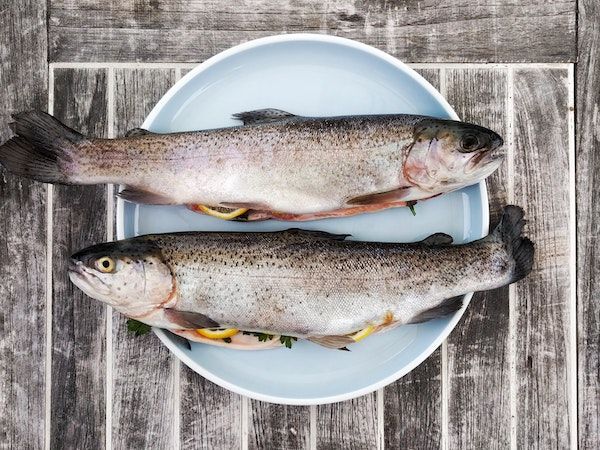GAIN (Green Aquaculture Intensification in Europe) is a European project that aims to make aquaculture more efficient and sustainable, with a view to safeguarding the environment, the wellbeing of fish, and product quality. The project, which was funded by Horizon 2020, was coordinated by Roberto Pastres, professor of ecology at Ca’ Foscari. It lasted three years (ending in October 2021) and involved 21 universities in Europe, Canada, China, and the United States of America.
GAIN developed according to three key objectives:
- to make farming more efficient with the implementation of predictive modelling, obtained by processing big data;
- to reuse byproducts to promote a circular economy;
- to assess the economic and environmental sustainability of innovations, as well as to raise consumer awareness of the nutritional value of products.
Professor Pastres, who works at the Department of Environmental Sciences, Informatics and Statistics, describes the results of the project, which pave the way for a more sustainable future for aquaculture.
Moreover, on 19 January 2022 Professor Pastres will be a guest speaker at the webinar The Big Fish Series: Can you eat the whole fish?, organised by the University of Stirling (Scotland). Register for the webinar here.
Professor Pastres supervised a research team made up of research grant holders Camilla Bertolini, Andrea Forchino, Adriano Lima, Erika Porporato, Edouard Royer, Silvio Cristiano, as well as PhD student Matteo Bolzonella. During the final phase of the project, Professor Mauracher and her team from the Department of Management made a significant contribution to the analysis of economic sustainability.
Predictive modelling for more efficient and eco-friendly farming
The researchers involved in GAIN elaborated the prototype of a platform for data management and real-time forecasts, based on the principles of precision aquaculture. Ca’ Foscari’s team applied these principles to the trout farming, in a trout farm in the Italian province of Trento.
“Farmed trout are the most important aquaculture product in Italy by volume — in fact, about 35,000 tonnes of trout is produced annually, mostly in the regions of Veneto, Lombardy and Friuli-Venezia Giulia,” says Professor Pastres. “In these pilot sites we monitored farmed fish in continuous and non-invasive ways, in order to assess how big they were and how much oxygen was in the water. By using artificial intelligence, the big data collected can be processed and crossed with data regarding environmental variables (such as water temperature), in order to make forecasts. We created a platform that works as a central hub which collects data for processing. This allows us to make forecasts that can offer useful information to farmers, such as how much food and oxygen the fish need. These forecasts promote fish well-being and higher quality fish for consumers. Moreover, the forecasts improve the farming process in terms of resource management efficiency, waste reduction, and cost savings for producers.
For example, informed feeds management allows producers to save between 2% and 5%. This may seem irrelevant, but when you consider that feeds accounts for 50-60% of production costs, you can understand how the small initial investment needed to implement predictive modelling in farms can have a significant impact on farming proceeds.
The reuse of waste material for more sustainable feeds
The second objective of the project was the conversion of the waste obtained from the processing of fish for commercial purposes and of farming wastewater into by-products to be used in aquaculture and in other sectors, according to the concept of circular economy.
“When fish is used for the production of fillet and of other products for sale in large-scale retailing, 30-50% becomes biomass waste which can be transformed into hydrolised protein, gelatine, collagen, and bioapatite. Even wastewater can be treated to recover and harvest nitrogen and phosphorus — the latter element being particularly valuable to maintain current yields in farming. Sustainability analyses of these recovery processes shows that they are economically advantageous and have a lighter environmental impact in terms of waste management.
By-products can be used in feeds for domestic animals, in biomaterials, in the cosmetic industry, and in fish feeds — in keeping, of course, with regulatory constraints. However, the use of waste to produce fish feeds can make aquaculture more sustainable by reducing the percentage of flour and fish oil that is still used in many fish feeding products.
The main species of fish farmed in Europe are carnivorous. This means that small fish (such as anchovies) must be caught in order to feed the fish eaten by humans (such as sea-bass and salmon). This mechanism is called the ‘fishmeal trap’ and is not sustainable in economic and environmental terms. The feed industry is trying to modify the composition of feeds to improve sustainability whilst maintaining nutritional value, which is important to ensure the quality of farmed fish. To this end, it is necessary to mix protein substances with small percentages of microalgae — vegetable organisms rich in Omega3 and long chain fatty acids — which contribute to making fish an important part of a healthy human diet.
GAIN has developed innovative feeds which are formulated according to circular economy principles. These feeds are excellent in terms of nutritional value, animal well-being, and process sustainability — they allow farmers to employ less fish in the production of feeds for carnivorous fish.”
Greater consumer awareness
The third objective of GAIN regarded the quality of the final product. The project aimed to raise consumer awareness of food production processes. To this end, the research team tested an app prototype that allows users to scan a QR code to display a ‘talking label’ that contains information about the characteristics of a product.











